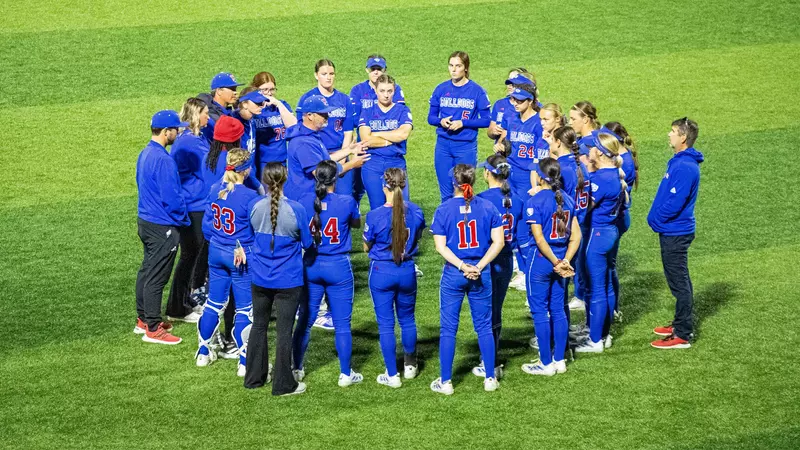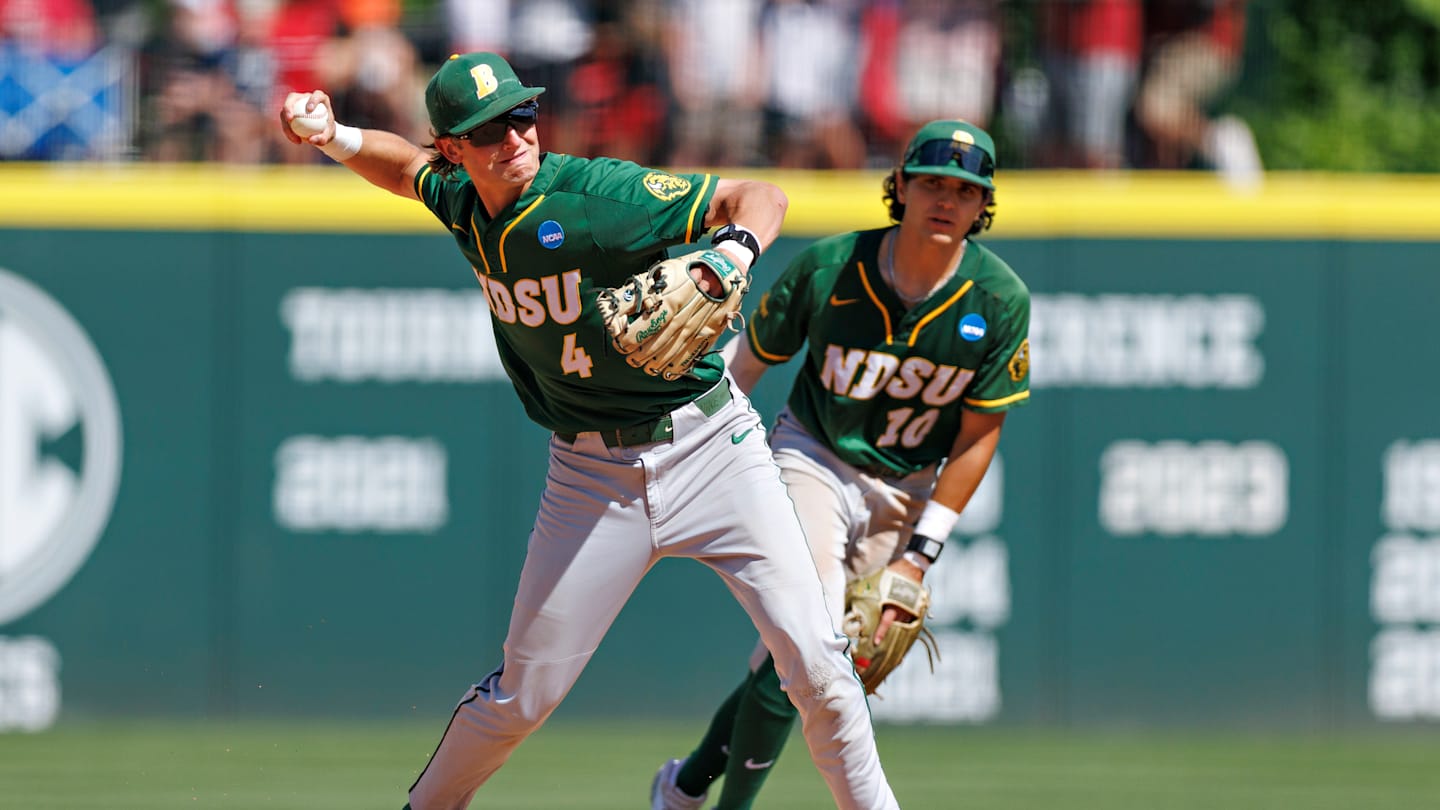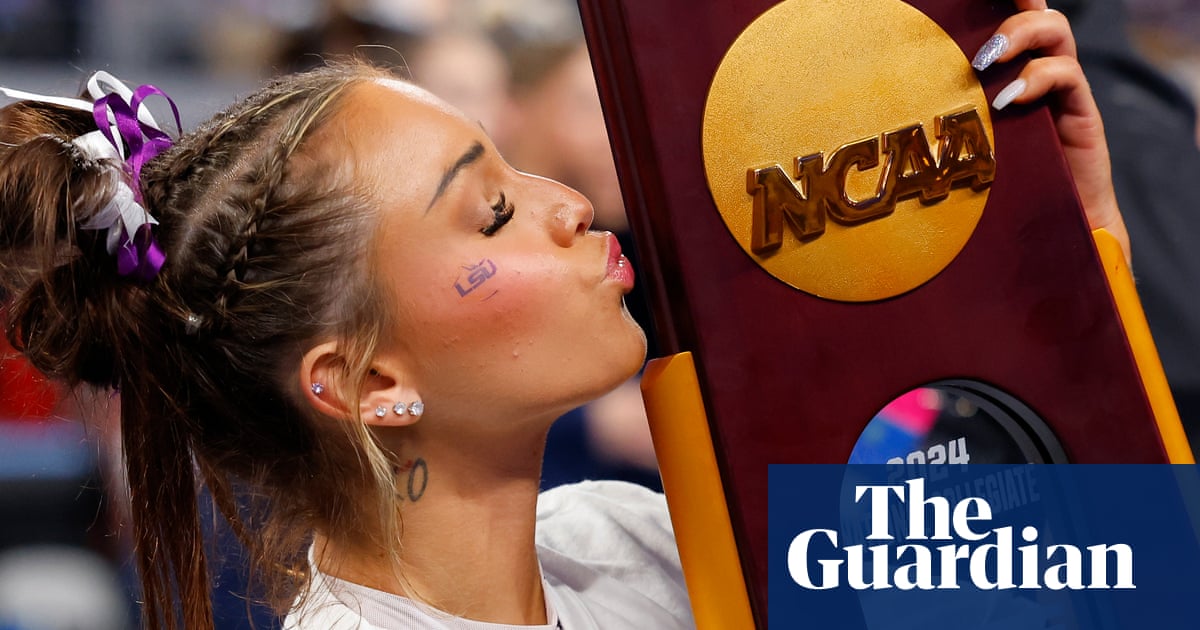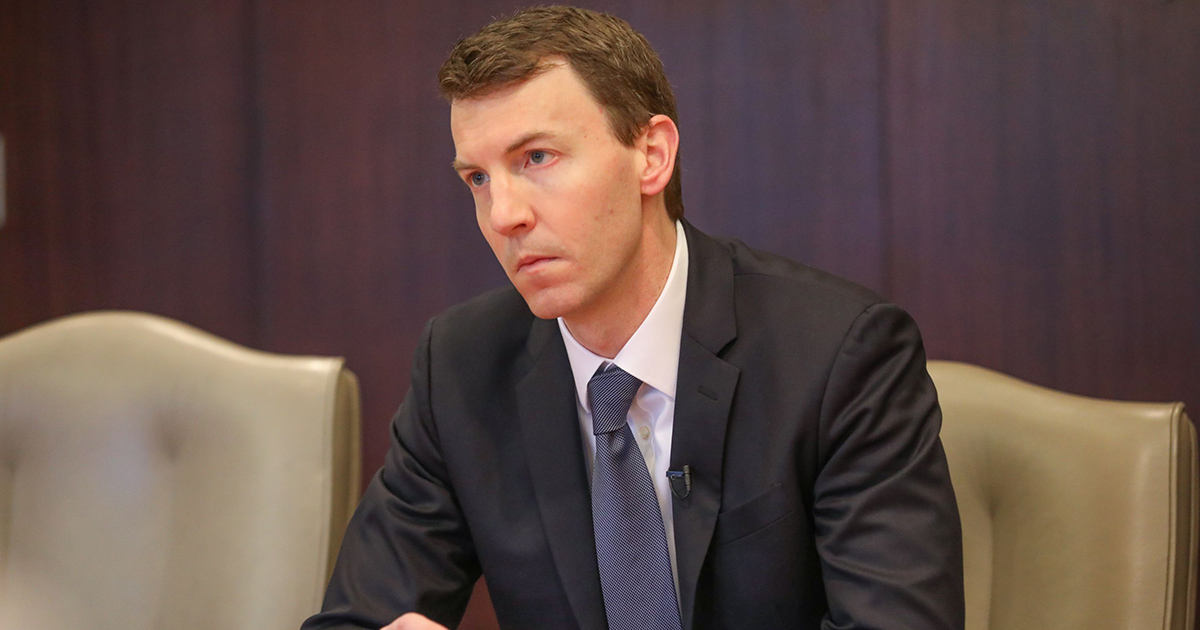NIL
Preview: LA Tech at Conference-USA Tournament
Story Links RUSTON – Louisiana Tech softball is set for the Conference USA tournament after ending the regular season at 30-23 (15-12 CUSA). The Bulldogs enter this week’s tournament as the No. 4 seed and will open with New Mexico State on Wednesday at 2:30 p.m. for their first-round matchup. […]

RUSTON – Louisiana Tech softball is set for the Conference USA tournament after ending the regular season at 30-23 (15-12 CUSA). The Bulldogs enter this week’s tournament as the No. 4 seed and will open with New Mexico State on Wednesday at 2:30 p.m. for their first-round matchup.
The six-team tournament is a double elimination event, with the top two seeds earning first-round byes. Liberty is the No. 1 seed, followed by WKU (No. 2), Jax State (No. 3), LA Tech (No. 4), New Mexico State (No. 5) and SHSU (No. 6).
TOURNAMENT INFORMATION
Date: May 7-10
Time: Wednesday – 2:30 p.m. vs. No. 5 New Mexico State
Location: WKU Softball Complex (Bowling Green, Ky.)
Watch: ESPN+
CUSA Tournament History: 11-12
CUSA TOURNAMENT HISTORY
This will be LA Tech’s 10th appearance in the CUSA Tournament. The Bulldogs have made every tournament since joining the league except for 2014. LA Tech is 11-12 in CUSA tournament games after going 1-2 in last year’s CUSA tournament. LA Tech has won two CUSA Tournament Championships (2017, 2019). The Bulldogs went 4-1 in the 2017 tournament and defeated FIU 1-0 in the Championship game. The 2019 tournament saw the Bulldogs go 3-0 with a 3-1 win over Marshall in the Championship game.
ABOUT LA TECH
LA Tech concluded its regular 53-game season at 30-23 (15-12 CUSA). The Bulldogs went 1-2 this past weekend in Huntsville, winning the middle game of the series 5-4 in eight innings.
The win marked number 30 for the Bulldogs, giving head coach Josh Taylor 30+ wins in each of his first four seasons at the helm. It also marked the 27th time in program history that the Bulldogs have finished with 30+ wins.
The Bulldogs had three players finish with 50+ hits in the regular season, and five players with a .300 average or better. Alexis Gilio leads the team with 55 hits, followed by Elena Heng (54), and Nicole Hammoude (53). Claire Raley (49) and Reagan Marchant (47) were the only other two Bulldogs to finish with 45+ hits. Hammoude’s .353 batting average leads the team, followed by Marchant (.322), and Gilio (.318).
Three LA Tech player’s drove in 30+ runs, with two driving in 45+. Marchant leads the team with 49 RBI, followed by Hammoude (42), and Raley (33). The Bulldogs launched 36 home runs this season, with 17 of them coming off the bat of Marchant. Hammoude finished second with eight long balls, followed by Raley who hit six. Marchant hit her 17th home run this past weekend against SHSU to tie the program’s single season home record. The redshirt sophomore just needs one more to set a new mark.
Allie Floyd finished the season 21-13 after earning a win and taking a loss against SHSU. The right-hander led CUSA in wins (21), complete games (17), innings pitched (195.1), and strikeouts (177). She recorded three shutouts and was the only pitcher in the league to record more than 145 strikeouts. She became the program’s all-time single season record holder with 13 CUSA wins this season, while she became the 18th Bulldog to record 20+ wins in a single season.
Laney Johnson finished with a 5-4 record in the circle during the regular season. The true freshman was second on the team in wins, innings pitched (69.1) and finished tied for second with 21 strikeouts.
Alyssa Martin and Mattison Buster both earned two wins this season. Martin had a career day in the season finale against SHSU as she carried a perfect game into the bottom of the seventh inning. The former walk-on registered a career-high 6.0 innings, while allowing one run and one hit.
ABOUT NEW MEXICO STATE
The Aggies enter this week’s tournament as the No. 5 seed after recording a 27-25 (14-13 CUSA) mark.
New Mexico State had two players finish with 50+ hits in Kristiana Watson (60) and Desirae Spearman (53). Watson led the team with 47 RBI, followed by Spearman with 44. Spearman led the team with 19 home runs while Watson blasted 15.
The Aggies are batting .299 as a team with 67 total home runs this season. Opponents are batting .297 against the NMSU pitching staff, which carries a 4.46 team ERA.
In the circle, Faith Aragon led the team with 12 wins, followed by Spearman with 11. Aragon tossed a team-high 122.1 innings, followed by Spearman’s 108.0. Spearman led the staff with 112 strikeouts while Aragon fanned 83.
The Bulldogs went 1-2 against the Aggies when they made a visit to Ruston during the regular season (Mar. 7-9). NMSU won the opener 5-0, while defeating the Bulldogs 3-1 on Saturday. LA Tech defeated NMSU 10-4 in the series finale. Floyd earned the win in the circle after allowing four runs on 11 hits with seven strikeouts. Heng collected three hits, while Raley had two base knocks in the win. Addison Snyder drove in three runs followed by Hammoude with two.
SUPPORT LA TECH ATHLETICS
Championships require championship resources. Fans can make a direct impact on the success of LA Tech Athletics through LTAC, Aillet Society, T-Club, and Young Alumni program as well as the Bulldog Community Outreach which is the NIL collective that supports Bulldog and Lady Techster student-athletes. Visit BuildTheLegacy.com today.
BARK LOUDER
Our mission is to engage, develop, and advance the Louisiana Tech Athletics brand. You can do that by spending time consuming our content and by investing your talents. By barking louder with your time and talent, you can affect progress and brand advancement in a meaningful way. Visit LATechSports.com/BarkLouder today. You bark. We bark. Louder together.
SOCIAL MEDIA
For all the latest in Bulldog Softball, follow us on X (@LATechSB), Instagram (@LATechSB), and Facebook (LouisianaTechSoftball).
NIL
Changes sweeping NCAA sports don’t change everything
Resolution of the House v. NCAA settlement allows schools to distribute $20.5 million to athletes. This is the first time schools have been permitted to pay their athletes direct compensation. If you’re still arguing that a full-ride scholarship should be enough incentive for college kids to represent a school, that mom-and-pop operation on main street […]
Resolution of the House v. NCAA settlement allows schools to distribute $20.5 million to athletes. This is the first time schools have been permitted to pay their athletes direct compensation.
If you’re still arguing that a full-ride scholarship should be enough incentive for college kids to represent a school, that mom-and-pop operation on main street no longer exists. It has been steamrolled by an enterprise that generates billions of dollars, and yes, the people who supply the labor and the entertainment deserve a cut of that ever-expanding pie.
I hear a familiar complaint often. That college sports have been ruined. That the free-for-all created by NIL has made things out of control. That they are done being fans.
Believe me, I feel that frustration and have concerns about how things will look and function, say, five years from now. Schools have a lot to sort out, starting with how they plan to pay for revenue-sharing every year.
The transfer portal has created more disruption to my passion for college sports than financial exchanges, though, obviously, athlete movement and money are intertwined.
NIL
UNC Baseball lands its shortstop of the future with this transfer portal addition
Featuring a veteran team during the 2025 season, it was well-known that the UNC baseball program had some work to do in the transfer portal this offseason. With a handful of roster voids due to players exhausting their eligibility (and potential MLB Draft picks), Scott Forbes and the Diamond Heels need to replenish that talent […]


Featuring a veteran team during the 2025 season, it was well-known that the UNC baseball program had some work to do in the transfer portal this offseason.
With a handful of roster voids due to players exhausting their eligibility (and potential MLB Draft picks), Scott Forbes and the Diamond Heels need to replenish that talent by bringing in some transfers who can help that objective.
The shortstop position is a major need for North Carolina, given Alex Madera has exhausted his eligibility. Looking for its third starting shortstop in as many seasons, Forbes seems to have found his guy, securing a commitment from North Dakota State transfer Jake Schaffner.
NEW COMMIT: @DiamondHeels snagging North Dakota State’s Jake Schaffner out of the portal is a nice get for Scott Forbes and the #TarHeels. Schaffner hit .364 last season, was a base-stealing threat and was steady defensively.
Profile: https://t.co/NtiHS3o7mG
Portal:… pic.twitter.com/w7TswxLbWD
— Kendall Rogers (@KendallRogers) June 13, 2025
A top-of-the-order caliber bat, Schaffner put together two very strong seasons at North Dakota State. Over 108 games played, the Janesville, Wisconsin native posted a .353 batting average, swiping 34 bases. Along with his elite ability to get on base (and eventually steal them), Schaffner provides a steady presence at shortstop, a defensive position that is extremely important for any baseball team.
North Carolina has now landed four transfers to help bolster next year’s squad. While the names aren’t necessarily ones that you often hear about, the Tar Heels have done a nice job in identifying talent that can transition to Chapel Hill nicely.
Let’s remember: guys like Alex Madera, Kane Kepley, and Tyson Bass (among others) are some of the transfer portal additions that made big-time noise for the Diamond Heels over the last few seasons.
The UNC baseball program isn’t looking to rebuild: they are looking to reload. Coming up just short of a trip to Omaha, the Diamond Heels are motivated to get back there, as Forbes and his staff will ensure that they field the best everyday lineup in order to accomplish that goal.
Adding Schaffner is an underrated move that has the potential of being a big-time addition for the UNC baseball program.
NIL
Oregon Ducks’ Dante Moore Shares His Journey, Donates NIL Money To Hometown
Oregon Ducks quarterback Dante Moore is preparing to lead as the team’s starter in 2025. Before the season begins, Moore is demonstrating his leadership off the field, returning to his hometown in Detroit. One of the ways Moore sought to help is by using his Name, Image, and Likeness (NIL) earnings to help his alma […]

Oregon Ducks quarterback Dante Moore is preparing to lead as the team’s starter in 2025. Before the season begins, Moore is demonstrating his leadership off the field, returning to his hometown in Detroit.
One of the ways Moore sought to help is by using his Name, Image, and Likeness (NIL) earnings to help his alma mater. Moore returned to Martin Luther King High School and donated a $10,000 check to the football team.
The Oregon quarterback also hosted a book signing for his children’s book, “From Journey to Dream.” The book is about Moore’s journey from childhood to playing college football. Moore spent a season with the UCLA Bruins before transferring to Oregon where he sat for a season behind Cleveland Browns rookie quarterback Dillon Gabriel.
Moore hopes his book can help inspire those pursuing their dreams. He recounted his mistakes and that while things may not go as expected, it is a learning experience.
“I feel like this book will be good for kids just to read and understand,” Moore said at the book signing.
Moore was originally committed to Oregon before flipping to UCLA. The flip was just another step in his journey to becoming the Ducks’ starter.
In Moore’s one season with UCLA, he passed for 1,610 yards, 11 touchdowns, and nine interceptions. He finished the season with a 53.5 completion percentage and entered the portal. Both Moore and Gabriel transferred to Oregon following the 2023 season. Gabriel became the starter, causing Moore to sit for a season.
MORE: Five-Star Quarterback Ryder Lyons Visiting Oregon: Ducks Trending For Commitment?
MORE: Tampa Bay’s Todd Bowles Makes Bold Statement On Rookie Tez Johnson’s Speed, Playing Time
MORE: Cleveland Browns’ Myles Garrett Reveals First Impression Of ‘Composed’ Dillon Gabriel
Instead of holding a grudge and entering the portal again, Moore embraced the season as a learning experience.
“If you have a dream, chase it. Many people think the sky’s the limit, but I say reach for the stars,” Moore continued. “Many things don’t happen to go your way, I feel like you just learn from them. My freshman year at UCLA, a lot of mistakes happened there, but overall, I learned from them.”
“All these expectations and things like that, my work will show that any expectation or anything people expect me to do, I know I can do it,” Moore said.
There are high expectations for taking over as Oregon’s starting quarterback. Gabriel was a Heisman Trophy finalist and was selected by the Browns in the third round of the 2025 NFL Draft. The Ducks have produced two first-round quarterbacks since Los Angeles Chargers quarterback Justin Herbert was selected in the 2020 NFL Draft. After Herbert in 2020, the Denver Broncos selected former Ducks quarterback Bo Nix in the 2024 NFL Draft.
Oregon is coming off an undefeated regular season and was ranked the No. 1 team in the nation. Although the postseason did not go as Oregon would have wanted, losing against Ohio State in the Rose Bowl, the Ducks are expected to be back in the College Football Playoff in 2025.
“This year has been a learning year for me,” Moore told On3’s Pete Nakos. “Transferring in with Dillon was probably one of the best things I ever did. Coming to Oregon and competing with Dillon and standing behind him. I learned a lot from him. He’s been in college for quite some time, and I’m glad that the Browns picked him up.”
NIL
Why female athletes are challenging the NCAA’s $2.8bn settlement | College sports
College athletes spent decades fighting for the right to make money from their name, image and likeness (NIL). In 2021, they won. Now, a $2.8bn NCAA settlement is set to compensate hundreds of thousands of current and former athletes who missed out on those earnings. But not everyone thinks the deal is fair. Eight female […]

College athletes spent decades fighting for the right to make money from their name, image and likeness (NIL). In 2021, they won. Now, a $2.8bn NCAA settlement is set to compensate hundreds of thousands of current and former athletes who missed out on those earnings. But not everyone thinks the deal is fair.
Eight female athletes filed an appeal this week, arguing the agreement violates Title IX, the US law banning sex-based discrimination in education. They say the way the money is divided, largely favoring football and men’s basketball players, shortchanges women by more than $1bn.
Their appeal has paused all back payments, potentially delaying them for more than a year. However, the NCAA’s new plan to allow schools to pay current players directly starting 1 July will still go ahead.
So what does this all mean for athletes as well as the future of college sports? Here’s what’s going on …
What is the NCAA settlement about?
The NCAA agreed to pay $2.8bn to compensate athletes who were previously barred from earning income off their name, image, and likeness (NIL), including things like video game appearances, jersey sales, or social media sponsorships. The settlement covers athletes going back to 2016.
It also clears the way for a major change: beginning 1 July 2025, colleges will be allowed to directly share revenue with current players, up to $20.5 million per school per year.
It’s a major shift from the NCAA’s traditional amateurism model, which argued that athletes should only be compensated with scholarships, not salaries or endorsement income.
Who’s appealing the deal and why?
Eight female athletes who competed in soccer, volleyball, and track have filed an appeal. Their names include Kacie Breeding (Vanderbilt) and Kate Johnson (Virginia), along with six athletes from the College of Charleston.
They argue the deal violates Title IX, the federal law that bans sex-based discrimination in education. Specifically, they say the settlement gives up to 90% of the money to men in football and basketball, depriving women of $1.1bn in rightful compensation.
What is Title IX and how does it apply here?
Title IX is a 1972 US law requiring equal access and treatment for men and women in federally funded education programs, including athletics. Colleges must offer comparable resources, scholarships and participation opportunities across men’s and women’s sports.
The female athletes argue that since NIL bans affected both genders equally, compensation for those bans must also be equitable, and that using historical TV revenue (which favors men’s sports) ignores systemic barriers women have faced in marketing and media exposure.
What did the judge say about the Title IX argument?
US district judge Claudia Wilken approved the settlement last week and rejected Title IX-based objections, saying they fell outside the scope of the antitrust case. The female athletes disagree and are now asking the Ninth Circuit Court of Appeals to intervene.
What happens to the money in the meantime?
Because of the appeal, no back pay will be distributed until the court rules. That delay could last several months or longer. According to the NCAA’s lead attorney, the organization will continue funding the settlement pool, but the money will sit untouched until the case is resolved.
The current payout formula is based on historical media revenue and licensing data. Because football and men’s basketball generated the majority of money for schools – especially through TV contracts – those athletes stand to receive the most compensation.
Critics say that approach bakes in decades of inequality, because women were denied the same marketing exposure and investment in the first place.
What are the broader concerns about this settlement?
Some worry that schools will cut so-called “non-revenue” sports – like wrestling, swimming or gymnastics – to fund revenue-sharing with top athletes. Others fear this pushes college sports closer to a professional minor league system, undermining education and competitive balance. Still others say that without clear Title IX guidance, women may continue to be marginalized even in a post-amateurism era.
What happens next?
The Ninth Circuit will now review the appeal. Briefs are due by 3 October, and while both sides say they’ll push for speed, appeals in this court have been known to take 12 to 18 months.
Until the case is resolved, no back payments will be made to athletes who played between 2016 and 2021. But the revenue-sharing era is coming, whether or not the NCAA is ready for it.
NIL
Why female athletes are challenging the NCAA's $2.8bn settlement
College athletes spent decades fighting for the right to make money from their name, image and likeness (NIL). In 2021, they won. Now, a $2.8bn NCAA settlement is set to compensate hundreds of thousands of current and former athletes who missed out on those earnings. But not everyone thinks the deal is fair. Eight female […]


College athletes spent decades fighting for the right to make money from their name, image and likeness (NIL). In 2021, they won. Now, a $2.8bn NCAA settlement is set to compensate hundreds of thousands of current and former athletes who missed out on those earnings. But not everyone thinks the deal is fair.
Eight female athletes filed an appeal this week, arguing the agreement violates Title IX, the US law banning sex-based discrimination in education. They say the way the money is divided, largely favoring football and men’s basketball players, shortchanges women by more than $1bn.
Their appeal has paused all back payments, potentially delaying them for more than a year. However, the NCAA’s new plan to allow schools to pay current players directly starting 1 July will still go ahead.
So what does this all mean for athletes as well as the future of college sports? Here’s what’s going on …
What is the NCAA settlement about?
The NCAA agreed to pay $2.8bn to compensate athletes who were previously barred from earning income off their name, image, and likeness (NIL), including things like video game appearances, jersey sales, or social media sponsorships. The settlement covers athletes going back to 2016.
It also clears the way for a major change: beginning 1 July 2025, colleges will be allowed to directly share revenue with current players, up to $20.5 million per school per year.
It’s a major shift from the NCAA’s traditional amateurism model, which argued that athletes should only be compensated with scholarships, not salaries or endorsement income.
Who’s appealing the deal and why?
Eight female athletes who competed in soccer, volleyball, and track have filed an appeal. Their names include Kacie Breeding (Vanderbilt) and Kate Johnson (Virginia), along with six athletes from the College of Charleston.
They argue the deal violates Title IX, the federal law that bans sex-based discrimination in education. Specifically, they say the settlement gives up to 90% of the money to men in football and basketball, depriving women of $1.1bn in rightful compensation.
What is Title IX and how does it apply here?
Title IX is a 1972 US law requiring equal access and treatment for men and women in federally funded education programs, including athletics. Colleges must offer comparable resources, scholarships and participation opportunities across men’s and women’s sports.
The female athletes argue that since NIL bans affected both genders equally, compensation for those bans must also be equitable, and that using historical TV revenue (which favors men’s sports) ignores systemic barriers women have faced in marketing and media exposure.
What did the judge say about the Title IX argument?
US district judge Claudia Wilken approved the settlement last week and rejected Title IX-based objections, saying they fell outside the scope of the antitrust case. The female athletes disagree and are now asking the Ninth Circuit Court of Appeals to intervene.

What happens to the money in the meantime?
Because of the appeal, no back pay will be distributed until the court rules. That delay could last several months or longer. According to the NCAA’s lead attorney, the organization will continue funding the settlement pool, but the money will sit untouched until the case is resolved.
Why is most of the money going to men’s football and basketball players?
The current payout formula is based on historical media revenue and licensing data. Because football and men’s basketball generated the majority of money for schools – especially through TV contracts – those athletes stand to receive the most compensation.
Critics say that approach bakes in decades of inequality, because women were denied the same marketing exposure and investment in the first place.
What are the broader concerns about this settlement?
Some worry that schools will cut so-called “non-revenue” sports – like wrestling, swimming or gymnastics – to fund revenue-sharing with top athletes. Others fear this pushes college sports closer to a professional minor league system, undermining education and competitive balance. Still others say that without clear Title IX guidance, women may continue to be marginalized even in a post-amateurism era.
What happens next?
The Ninth Circuit will now review the appeal. Briefs are due by 3 October, and while both sides say they’ll push for speed, appeals in this court have been known to take 12 to 18 months.
Until the case is resolved, no back payments will be made to athletes who played between 2016 and 2021. But the revenue-sharing era is coming, whether or not the NCAA is ready for it.
NIL
Everyone will soon know who Bryan Seeley is and what the College Sports Commission does
The Kentucky athletic department has started a Champions Blue LLC. to help them transition into the new era of college athletics. Revenue-sharing will arrive on July 1 and all participating universities must participate in “NIL Go” which will serve as a clearinghouse for any third-party deals. Schools will be paying out of pocket but they […]

The Kentucky athletic department has started a Champions Blue LLC. to help them transition into the new era of college athletics. Revenue-sharing will arrive on July 1 and all participating universities must participate in “NIL Go” which will serve as a clearinghouse for any third-party deals. Schools will be paying out of pocket but they will be also involved in making sure athletics are being paid within the rules of a new system.
Who will they report to? We now know the answer.
Major League Baseball (MLB) executive Bryan Seeley has been named as the CEO of the College Sports Commission (CSC). The MLB vice president of legal and operations will now be tasked with making sure that college athletes and schools are following the rules that have been established in the House v. NCAA settlement.
“I am honored to serve as the first CEO of the College Sports Commission at this pivotal moment in the history of collegiate athletics,” Seeley said in a statement last week. “I look forward to implementing a system that prioritizes fairness, integrity, and opportunity, while preserving the values that make college sports unique. I am energized by the work ahead and excited to begin building out our team.”
“Bryan brings unwavering integrity and a wealth of relevant experience to his new role leading the College Sports Commission and working to ensure a smooth implementation of this new system,” power conference commissioners said in a joint statement. “We’re grateful to have an individual with his credentials and expertise at the helm, and we look forward to his leadership as we transition into this new era of college sports.”
Bryan Seeley will be asked to help form the CSC’s investigative and enforcement teams. This commission will play an integral role in enforcing the settlement’s terms and working hand-in-hand with “NIL Go” and Deloitte. His main job will be to enforce revenue-sharing and roster limits rules and regulations. The NCAA is officially ceding power to the CSC to enforce rules upon those participating in revenue-share. Seeley and the CSC are essentially the governing body of power conference athletics now.
You will be hearing his name a lot moving forward.
The CSC’s new leader is expected to make a seven-figure salary and will quickly become one of the most important individuals in college athletics. A former attorney, Seeley brings investigative experience and will be someone that power conference leaders rely on heavily to help run the new system that they have created.
Lawsuits are still expected — the NCAA is still looking for Congressional assistance on Capitol Hill — but Bryan Seeley will become an important face for the new era of college athletics. Expect to see the new hire do multiple interviews as the CSC becomes the new policing agency for the revenue-sharing era. Whenever a school gets in trouble, they will have to deal with Seeley for any violations regarding salary cap management.
The new day is here.
-

 Health1 week ago
Health1 week agoOregon track star wages legal battle against trans athlete policy after medal ceremony protest
-

 Professional Sports1 week ago
Professional Sports1 week ago'I asked Anderson privately'… UFC legend retells secret sparring session between Jon Jones …
-

 College Sports2 weeks ago
College Sports2 weeks agoIU basketball recruiting
-

 NIL3 weeks ago
NIL3 weeks ago2025 NCAA Softball Tournament Bracket: Women’s College World Series bracket, schedule set
-

 Professional Sports1 week ago
Professional Sports1 week agoUFC 316 star storms out of Media Day when asked about bitter feud with Rampage Jackson
-

 Rec Sports2 weeks ago
Rec Sports2 weeks agoScott Barker named to lead CCS basketball • SSentinel.com
-

 Rec Sports2 weeks ago
Rec Sports2 weeks agoJ.W. Craft: Investing in Community Through Sports
-

 Motorsports2 weeks ago
Motorsports2 weeks agoRockingham Speedway listed for sale after NASCAR return
-

 NIL3 weeks ago
NIL3 weeks agoGreg Sankey: ‘I have people in my room asking, why are we still in the NCAA?’
-

 Motorsports2 weeks ago
Motorsports2 weeks agoNASCAR Penalty Report: Charlotte Motor Speedway (May 2025)



 THINGS THE KNICKS MUST DO TO WIN GAME 6
THINGS THE KNICKS MUST DO TO WIN GAME 6 
 | First Take
| First Take



























